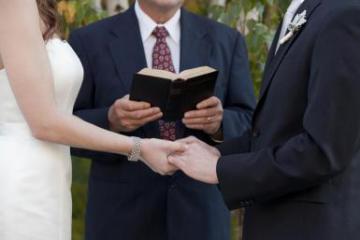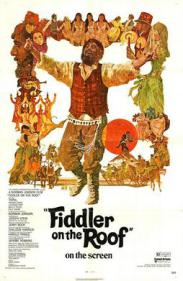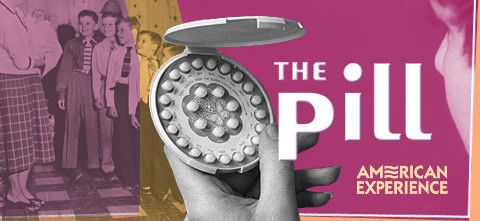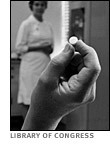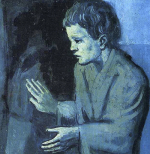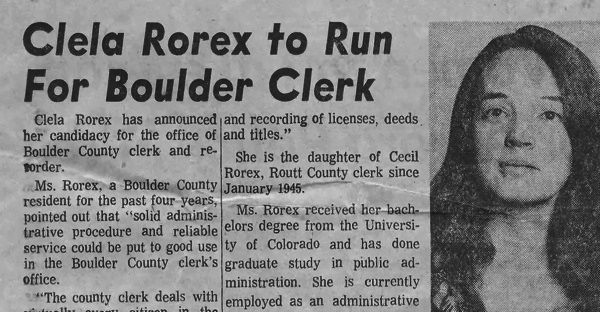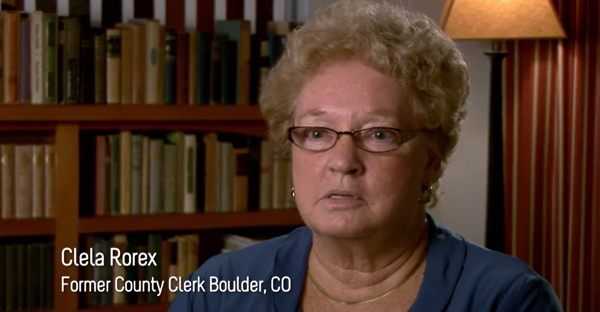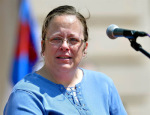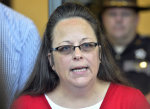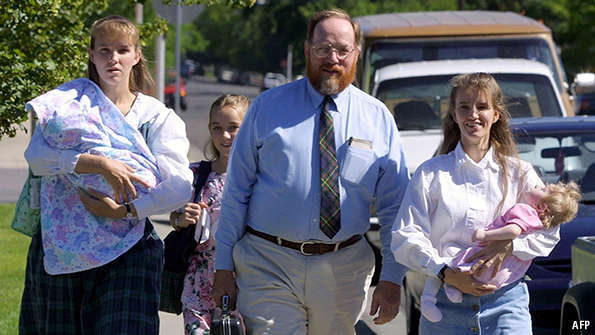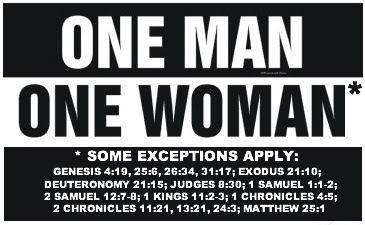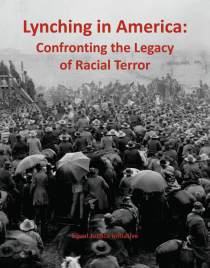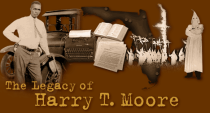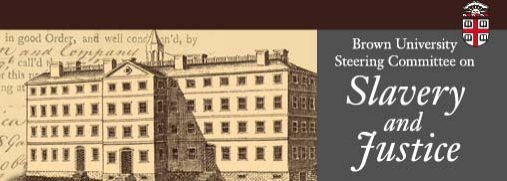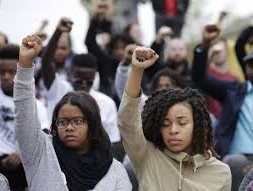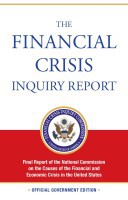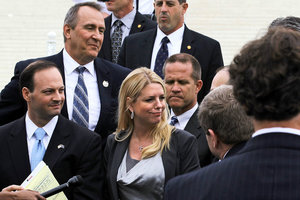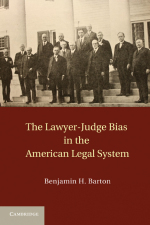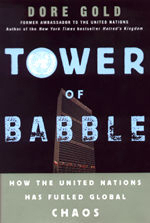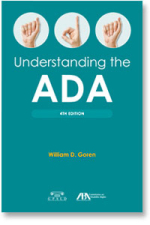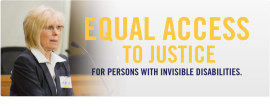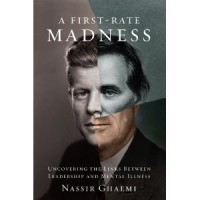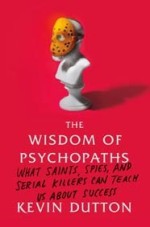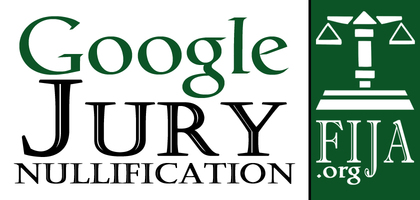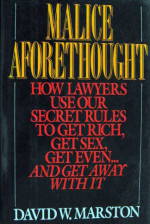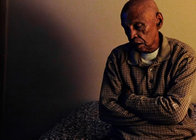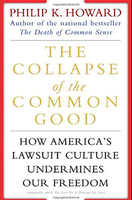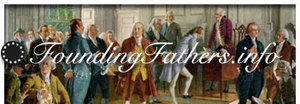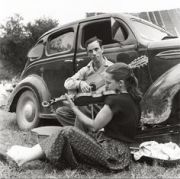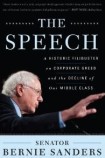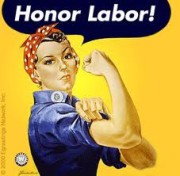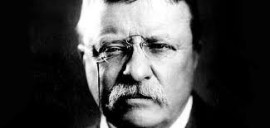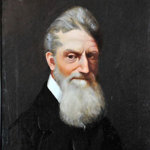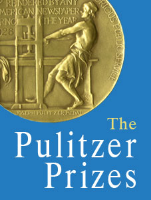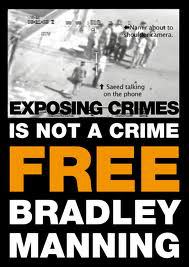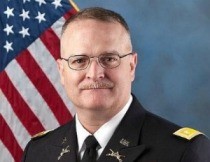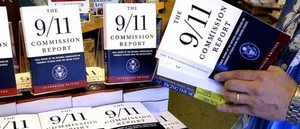...............................Traditional Marriage..................................
The section on Clerk Kim Davis is at the end of this page.
Traditional Marriage as discussed here is a departure from other marriage traditions, such as an arranged marriage or polygamy.
In this form of Traditional Marriage, a man and woman are considered competent to select a spouse for life, while having no such experience, education or training; and while avoiding any conflict of emotions, such as love, lust or hormones.
Traditional matchmakers may have avoided such problems.
The probability of a marriage ending in divorce is about 40%–50%
..........................Traditional Marriage Vows.............................
..........................Traditional Marriage Defined.........................
1. Traditional Marriage consists of a man and a woman, a husband and a wife.
2. In Traditional Marriage, the man and woman were virgins on their wedding day. Premarital sex was fornication and considered taboo. Virginity was especially important for the woman, and was signified by her wearing a white wedding dress during the marriage ceremony.
3. In Traditional Marriage, the wedding vow took a form similar to this vow:
I, (name), take you (name), to be my (wife/husband), to have and to hold from this day forward, for better or for worse, for richer, for poorer, in sickness and in health, to love and to cherish; from this day forward until death do us part.
4. The Traditional Marriage would be "consummated" on the wedding night, meaning the first sexual intercourse between the newly married husband and wife occurred after the marriage vows were exchanged, and the couple was legally married.
5. In Traditional Marriage, the husband sired children. He was the breadwinner of the family who supported his wife and family by working a job, or practicing a profession or craft. In times of war, the husband served his country in the military. In Traditional Marriage the husband’s duties were dependent on his love, virility, physical prowess, bread-winning, and his commitment to the spiritual and material well-being of his wife and family.
6. In Traditional Marriage, the wife bore children sired by her husband. Artificial birth control was prohibited by some religions. Abortion was illegal in most places in the USA. The wife raised the children at home, while the husband worked a job, or practiced a profession or craft. The wife nurtured the children, made a comfortable home, shopped for the family’s food and other necessities, cooked meals, washed clothes, and much more, and made her husband comfortable at the end of his workday.
In Traditional Marriage, the wife’s duties were dependent on her love, fertility, skills like child-reading, home economics, and her commitment to the spiritual and material well-being of her husband and family. In 1960 The Pill was a turning point on contraception.
The 1973 U.S. Supreme Court case Roe v Wade legalized abortion.
7. In Traditional Marriage, a wife would not leave her children to work a job, or pursue a career. In Traditional Marriage, any such desire by the wife to work, or climb the career ladder, was put on hold until after the children were raised and out on their own.
8. In Traditional Marriage, the wedding vow was solemn: A commitment made before God. The traditional wedding vow bears repeating here, highlighting its component parts:
I, (name), take you (name),
1. to be my (wife/husband),
2. to have and to hold from this day forward,
3. for better or for worse,
4. for richer, for poorer,
5. in sickness and in health,
6. to love and to cherish;
7. from this day forward
8. until death do us part.
9. In Traditional Marriage there was no divorce.
"What therefore God hath joined together, let not man put asunder." Mark 10:9, King James Bible.
10. In Traditional Marriage, the husband or wife remained married until the other died.
Traditional marriage lasts "until death do us part" under the marriage vow made before God.
11. In Traditional Marriage, there was no place for a prenuptial agreement.
12. In Traditional Marriage, artificial brith control was prohibited by the Catholic Church. Other faiths vary widely in their views on birth control. The Pill was a turning point on contraception. Roe v. Wade was a landmark case legalizing the right to abortion. See,
- Religion and birth control Wikipedia
- Christian views on contraception Wikipedia
- Protestant views on contraception Wikipedia
- Jewish views on contraception Wikipedia
- Christianity and abortion Wikipedia
- Abortion in the United States Wikipedia
- Roe v. Wade, 410 U.S. 113 (1973) Wikipedia
Conclusion
In my view Traditional Marriage no longer exists in America or in Western civilization that I know of, and represents a past that some cling to nostalgically, and others dismiss as an outdated relic.
Divorce, or dissolution of marriage in Florida (Chapter 61, Florida Statutes), ended "traditional marriage" long, long ago. See section 61.031, "Dissolution of marriage to be a vinculo.—No dissolution of marriage is from bed and board, but is from bonds of matrimony."
Economics also helped end traditional marriage, when one salary was no longer sufficient to raise a family. The two-income family arose in the 1970's. Some are calling this the two-income trap.
Marriage Licenses, Marion County, Florida (official site) Fla. Stat. Title XLIII Domestic Relations, Chapter 741 Marriage
Obtaining A Marriage License Marion County, FL (commercial site) Blood Tests are not required in Florida.
.......................... Age gap relationships ...................................
Slate: Don't Mind the Gap "A rule of thumb for determining the social acceptability of the age gap between romantic partners is to divide by two and add seven. If a man is 60, for example, his companion must be at least 37."
Age disparity in sexual relationships
Wikipedia
Age disparity in sexual relationships is the difference in ages of individuals in sexual relationships. Concepts of these relationships, including what defines an age disparity, have developed over time and vary among societies. Differences in age preferences for mates can stem from evolutionary mating strategies and age preferences in sexual partners may vary cross culturally. There are also social theories for age differences in relationships as well as suggested reasons for 'alternative' age-hypogamous relationships. Age-disparity relationships have been documented for most of recorded history and have been regarded with a wide range of attitudes dependant on sociocultural norms and legal systems. Read more
*Donald Trump is 24 years older than Melania, his current wife.
Marriage
Wikipedia
Marriage, also called matrimony or wedlock, is a socially or ritually recognized union or legal contract between spouses that establishes rights and obligations between them, between them and their children, and between them and their in-laws.[1] The definition of marriage varies according to different cultures, but it is principally an institution in which interpersonal relationships, usually sexual, are acknowledged. In some cultures, marriage is recommended or considered to be compulsory before pursuing any sexual activity. When defined broadly, marriage is considered a cultural universal. Read more
Marriage vows
Wikipedia
Marriage vows are promises each partner in a couple makes to the other during a wedding ceremony.
Background
In the time of the Roman Empire (17 BC - 476 AD) the lower classes had "free" marriages. The bride's father would deliver her to the groom, and the two agreed that they were wed, and would keep the vow of marriage by mutual consent. Wealthy Romans, though, would sign documents listing property rights to publicly declare that their union was legalized and not a common law marriage. This was the beginning of the official recording of marriage[citation needed].
The oldest traditional wedding vows can be traced back to the manuals of the medieval church. In England, there were manuals of the dioceses of Salisbury (Sarum) and York. The compilers of the first Book of Common Prayer, published in 1549, based its marriage service mainly on the Sarum manual.[1][2] Upon agreement to marry, the Church of England usually offered couples a choice. The couple could promise each other to "love and cherish" or, alternatively, the groom promises to "love, cherish, and worship", and the bride to "love, cherish, and obey".[3] Read more
...........Traditional Marriage began with a Tradition............
Fiddler on the Roof (film)
Wikipedia
Fiddler on the Roof is a 1971 American musical comedy-drama film produced and directed by Norman Jewison. It is an adaptation of the 1964 Broadway musical of the same name, with music composed by Jerry Bock, lyrics by Sheldon Harnick, and screenplay by Joseph Stein and based on stories by Sholem Aleichem. Starring Topol, Norma Crane, Leonard Frey, Molly Picon, and Paul Mann, the film centers on Tevye, the father of five daughters, and his attempts to maintain his Jewish religious and cultural traditions as outside influences encroach upon the family's lives. He must cope both with the strong-willed actions of his three older daughters, who wish to marry for love – each one's choice of a husband moves further away from the customs of his faith – and with the edict of the Tsar who evicts the Jews from the town of Anatevka.
Throughout the film, Tevye talks to God and directly to the audience, breaking the fourth wall. In these monologues, Tevye ponders tradition, the difficulties of being poor, the Jewish community's constant fear of harassment from their non-Jewish neighbors, and important family decisions.
The film was released to critical acclaim and won three Academy Awards, including Best Music, Scoring Adaptation and Original Song Score for arranger-conductor John Williams. It was nominated for several more, including Best Picture, Best Actor for Topol as Tevye, and Best Supporting Actor for Frey, who played Motel Kamzoil the Tailor. Topol and Frey had performed in stage productions of the musical; Topol as Tevye in the London production and Frey in a minor part as Mendel, the rabbi's son, on Broadway.[3] read more
Matchmaker, matchmaker make me a match, find me a find, catch me a catch...clip from Fiddler on the Roof - Matchmaker
Lazar Wolf asks Tevye for Tzeitel’s hand in marriage.
Motel finally asks for Tzeitel’s hand; they gave each other a pledge.
...................Traditional Marriage in the 1950's .......................
A Glimpse into Marriage Advice from the 1950s
World of Psychology
By Margarita Tartakovsky, M.S.
Associate Editor
As divorce rates in the U.S. were rising by the end of World War II, so were fears over the state of marriage and family life. Skyrocketing rates sent many couples to seek expert advice to bolster their marriages.
During this time, the idea that marriage could be saved — and a divorce prevented — with enough work gained ground, according to Kristin Celello, assistant professor of history at Queens College, City University of New York, in her fascinating book Making Marriage Work: A History of Marriage and Divorce in the Twentieth-Century United States. A slew of experts stepped in to help American couples strengthen their unions — and with some interesting suggestions.
These experts, however, weren’t necessarily trained therapists or even anyone who had anything to do with psychology. Take marriage expert Paul Popenoe, for example. He was incredibly well-known and established one of America’s first marriage counseling centers in the 1930s, made regular media appearances and contributed to Ladies Home Journal — and he was a horticulturalist.
The marriage prescriptions of the 1950s could be summed up in one sentence: It was mainly a woman’s job to foster a happy marriage and steer it away from divorce.
Marriage as a Career
For starters, marriage counselors encouraged women to think of marriage as a fulfilling career. As Celello writes:
Emily Mudd, for instance, outlined the many roles that women had to assume when they became wives. She approvingly quoted a "modern and prominent wife" who explained "To be a successful wife is a career in itself, requiring among other things, the qualities of a diplomat, a businesswoman, a good cook, a trained nurse, a schoolteacher, a politician and a glamour girl."
Experts also believed that wives were responsible for their husbands’ professional success. Dorothy Carnegie, whose husband was self-help guru Dale Carnegie, published How to Help Your Husband Get Ahead in 1953. She laid out a variety of suggestions and cited personal examples. For instance, because her husband had a tough time remembering names, she’d learn the names of party guests before events and incorporate their names into the conversation.
Corporate culture actually dictated that a wife could make or break her husband’s career. When hiring or promoting an employee, companies supposedly considered his wife. Celello cites self-made millionaire R.E. Dumas Milner in an article in Good Housekeeping:
We employers realize how often the wrong wife can break the right man. This doesn’t mean that the wife is necessarily wrong for the man but that she is wrong for the job. On the other hand, more often than is realized the wife is the chief factor in the husband’s success in his career.
Coping with Alcohol, Affairs & Abuse
Even when alcohol, affairs or abuse was the issue in a failing marriage, wives were still responsible for making the marriage work — and for likely causing their husbands to stray, drink or be violent in the first place.
For instance, experts suggested that wives consider whatever they were doing or not doing to cause their husbands to cheat. Fixing their behavior could bring their husbands back home. If a husband did come home, it was also his wife’s duty to make sure that he didn’t cheat in the future.
This is what a counselor at the American Institute of Family Relations told a woman whose husband had an affair after 27 years of marriage:
We have found in our experience, that when a husband leaves his home, he may be seeking refuge from an unpleasant environment. Could it be that your husband feels that he is not understood or appreciated in his own home? What might there be in your relations to him that could make him feel that way? Could you have stressed your contribution to your marriage in such a manner as to have belittled the part he has played and thus made him uncomfortable in his presence?
Experts also had ideas on how to deal with physical abuse in a marriage. As Celello writes in Making Marriage Work:
Clifford Adams thus assured wives whose husbands were prone to violence that following a program of avoiding arguments, indulging their husbands’ whims, helping them relax, and sharing their burdens would "foster harmony" in the home and make them "happy wives."
Divorcees Anonymous
Divorcees Anonymous (DA) was an organization that helped women avoid divorce, Celello writes. Interestingly enough, it was started by an attorney named Samuel M. Starr. Again, it was all about what the woman could do to save the marriage.
One woman sought help from the DA when she found out her husband was cheating. Apparently, according to Starr, the problem was that the woman looked decades older, wore dowdy clothes and had stringy hair. The women in the organization took her to the beauty salon and sewed her new clothes. They also worked with her daily on "her mind and her heart as well as her appearance." When she was deemed improved, the DA set up a date with her and her husband. After that, the story goes that the husband stopped seeing his mistress and came home.
Couples Therapy
When most couples attended marriage counseling, they actually saw the counselor separately. The American Association of Marriage Counselors believed that "joint conferences with both partners can be helpful but are difficult and potentially dangerous."
Finding a Husband
A woman’s career as a wife didn’t just start with her walk down the aisle, Celello points out. It began when she started searching for her mate. Women had to persuade potential partners into marriage since it was understood that women benefited more from matrimony. In essence, women had to work for their proposal, as the author of How to Make Him Propose described it. Specifically, the author writes:
It is up to you to earn the proposal — by waging a dignified, common-sense campaign designed to help him see for himself that matrimony rather than bachelorhood is the keystone of a full and happy life.
In addition to conducting a dignified campaign, women also needed to work on themselves, as a four-part series in 1954 in Ladies’ Home Journal suggested. In it, a single 29-year-old woman wrote about her counseling sessions in a "Marriage Readiness Course" at the American Institute of Family Relations. She learned that she needed to lower her expectations, improve her appearance and work on her intimacy issues — which she did and eventually landed a groom.
(Not that much has changed. Books on how to get a guy to marry you still exist today.)
In reality, according to Celello, many husbands did value their relationships and were willing to work on them. But the advice of the 1950s overwhelmingly put the responsibility of a relationship’s success on the wife.
Last reviewed: By John M. Grohol, Psy.D. on 27 Feb 2012
Published on PsychCentral.com.
___________________________________________________________________
About Margarita Tartakovsky, M.S.
Margarita Tartakovsky, M.S., is an Associate Editor at Psych Central. She also explores self-image issues on her own blog Weightless and creativity on her blog Make a Mess: Everyday Creativity.
View all posts by Margarita Tartakovsky, M.S.
.............. Traditional Marriage and Contraception ..............
American Experience
In May 1960, the FDA approved the sale of a pill that arguably would have a greater impact on American culture than any other drug in the nation's history. For women across the country, the contraceptive pill was liberating: it allowed them to pursue careers, fueled the feminist and pro-choice movements and encouraged more open attitudes towards sex.
Among the key players in the development of the drug were two elderly female activists who demanded a contraceptive women could eat like aspirin and then paid for the scientific research; a devout Catholic gynecologist who believed a robust sex life made for a good marriage and argued tirelessly that the Pill was a natural form of birth control; and a brilliant biologist who bullied a pharmaceutical company into risking a possibly crippling boycott to develop this revolutionary contraceptive. In describing the obstacles they all hurdled, The Pill presents a compelling account of a society in transition. Read more
Judge rules for group with moral, rather than
religious, objections to contraceptive mandate
ABA Journal Law News Now
By Debra Cassens Weiss
Sep 02, 2015 10:51 am CDT
A federal judge has ruled on behalf of an anti-abortion group that contended it should be entitled to the same exemption from the Affordable Care Act’s contraceptive-coverage mandate as religious organizations.
U.S. District Judge Richard Leon of Washington, D.C., ruled (PDF) Monday on behalf of the nonprofit, March for Life, the Blog of Legal Times, the New York Times and USA Today report. The group said it had a moral objection to the contraceptive requirement.
The Obama administration’s health-care law requires most employers to provide coverage for contraceptives in their insurance plans. Religious institutions and religiously oriented nonprofits can be exempted from the mandate.
Leon said the contraceptive mandate treats religious and nonreligious groups differently in violation of the equal protection clause. "March for Life has been excised from the fold because it is not ‘religious,’ " Leon wrote. "This is nothing short of regulatory favoritism."
The government had argued the First Amendment gives special protections to religious groups, and those protections don’t have to be extended to a group with moral objections to the law. The appeals court said religious groups do have some advantages over their secular counterparts, but religion "is not a talisman that sweeps aside all constitutional concerns."
Leon also ruled on behalf of two plaintiffs who are employed by March for Life who objected to the contraceptive mandate on religious grounds. Leon said the mandate violated the Religious Freedom Restoration Act because it burdens the workers’ sincere exercise of religion and it is not the least-restrictive means of providing contraceptives to women who want them.
The government’s interest in a sustainable market for insurance companies "would not be undermined by simply making it legal for a third-party provider to offer, without penalty, a plan consistent with plaintiffs’ religious beliefs," Leon wrote. Read more
The case is March for Life v. Burwell.
How to Save Marriage in America
How to Save Marriage in America The
Atlantic
Richard V. Reeves
February 14, 2014
Traditional matrimony—he brings home the bacon, she cooks it—is dying. But college-educated couples are pointing toward a new model with children at the heart of the union.
What’s happening to American matrimony? In 1960, more than 70 percent of all adults were married, including nearly six in ten twentysomethings. Half a century later, just 20 percent of 18-29-year olds were hitched in 2010. Marriage was the norm for young America. Now it's the exception.
American marriage is not dying. But it is undergoing a metamorphosis, prompted by a transformation in the economic and social status of women and the virtual disappearance of low-skilled male jobs. The old form of marriage, based on outdated social rules and gender roles, is fading. A new version is emerging—egalitarian, committed, and focused on children.
There was a time when college-educated women were the least likely to be married. Today, they are the most important drivers of the new marriage model. Unlike their European counterparts, increasingly ambivalent about marriage, college graduates in the United States are reinventing marriage as a child-rearing machine for a post-feminist society and a knowledge economy. It’s working, too: Their marriages offer more satisfaction, last longer, and produce more successful children. Read more
...... Divorce, also known as dissolution of marriage ......
Divorce
Wikipedia
Divorce (or dissolution of marriage) is the termination of a marriage or marital union, the canceling and/or reorganizing of the legal duties and responsibilities of marriage, thus dissolving the bonds of matrimony between a married couple under the rule of law of the particular country and/or state. Divorce laws vary considerably around the world, but in most countries it requires the sanction of a court or other authority in a legal process. The legal process of divorce may also involve issues of alimony (spousal support), child custody, child visitation / access, parenting time, child support, distribution of property, and division of debt. In most countries monogamy is required by law, so divorce allows each former partner to marry another person; where polygyny is legal but polyandry is not, divorce allows the woman to marry a new husband.
Divorce should not be confused with annulment, which declares the marriage null and void; with legal separation or de jure separation (a legal process by which a married couple may formalize a de facto separation while remaining legally married) or with de facto separation (a process where the spouses informally stop cohabiting). Reasons for divorce vary, from sexual incompatibility or lack of independence for one or both spouses to a personality clash.[1]
The only countries that do not allow divorce are the Philippines and the Vatican City, an ecclesiastical state, which has no procedure for divorce. Countries that have relatively recently legalized divorce are Italy (1970), Portugal (1975), Brazil (1977), Spain (1981), Argentina (1987),[2] Paraguay (1991),[3] Colombia (1991* [4]),[3] Ireland (1996), Chile (2004)[5] and Malta (2011).
Divorce can be a stressful experience, affecting finances, living arrangements, household jobs, schedules, parenting and the outcomes of children of the marriage as they face each stage of development from childhood to adulthood. Such children may be deeply affected.[6] Read more
Candace Roberts -- Say I Do (Official Video)
Divorce and The Florida Statutes
Chapter 61 DISSOLUTION OF MARRIAGE; SUPPORT; TIME-SHARING
PART I - GENERAL PROVISIONS (ss. 61.001-61.45)
PART II
- UNIFORM CHILD CUSTODY JURISDICTION AND
ENFORCEMENT ACT (ss. 61.501-61.542)
PART III - COLLABORATIVE LAW PROCESS ACT (ss. 61.55-61.58)
Pope Francis puts annulments on a fast track, says
bishops can hear uncontested cases
ABA Journal
By Martha Neil
September 9, 2015
Significantly reforming more than 300 years of Catholic practice, Pope Francis announced Tuesday that the process for obtaining a marriage annulment will be put on a fast track, effective Dec. 8.
Under the new rules, "lack of faith" can be a basis for a church-recognized marriage dissolution. The local bishop—rather than a three-judge regional panel—may hear the case if it is uncontested, if the couple agrees or if certain facts are established, such as violence used to induce marriage or the concealment of infertility, according to the Associated Press and the Detroit Free Press.
Appeals are no longer automatic and will take place only if requested.
The pope also called for fees charged by the church to be reduced or eliminated. However, a spokesman for the archdiocese in St. Louis said the U.S. Conference of Catholic Bishops will determine the cost of annulments. Church officials in some regions, such as Detroit, have already eliminated fees. In St. Louis, an annulment currently costs $750.
The fast-track approach should take no more than 45 days, the pope says and the traditional process before a three-judge panel should not exceed a year. Annulments historically can take years to complete.
The reason for the changes is to encourage those who have been distanced from the church to return, the pope said Tuesday. "The impulse for reform is fed by the enormous numbers of the faithful who … are too often alienated from the juridical structures of the church,"
In the Light of the Law discusses in detail the five new canons through which the pope instituted these reforms. Read more
 Hi, I'm Jenny, welcome to my little corner of the internet. If you're looking for FAQ's on Catholicism, life issues, marriage, and how to safely combine pregnancy with caffeine, you've come to the right place.
Hi, I'm Jenny, welcome to my little corner of the internet. If you're looking for FAQ's on Catholicism, life issues, marriage, and how to safely combine pregnancy with caffeine, you've come to the right place.
Suffer the children: the highest cost of divorce
Mama Needs Coffee blog
October 21, 2014
Last week I had the opportunity to sit down with a fabulously talented writer and speaker who was in town to give a lecture on motherhood. Since the event was in the evening, she had some time to
kill and I figured what more relaxing thing could I offer her than brunch at my favorite restaurant surrounded by 3 mewling, jam-covered children? What mother of 8 who, having flown across the
country to escape her own brood, wouldn’t relish the opportunity?
Anyway, that’s how I ended up eating eggs benedict with Lisa Lickona, who was gracious and funny and entertaining and didn’t bat an eyelash when I stripped Evie from the waist down on the patio lawn in plain view of all the other diners because I didn’t feel like heading to the restroom for the 15th time for something as simple as a diaper change. Read more
Suffer the children_ the highest cost of[...]
Adobe Acrobat document [363.6 KB]
Children of Divorce: An Overview of the Recent Literature
Humanum Review.com
By Lisa Lickona
Every generation has its defining moment, Susan Gregory Thomas argues in her biting, but sweetly endearing, memoir In Spite of Everything (Random House, 2011). Some kids grew up in London during the bombings of World War II. Others grew up in sleepy American suburbia, with a bombing going on inside their own hearts. That, she claims, is the state of her generation - Generation X - whose childhoods have been defined by the experience of their parents' divorce. Read more
20120227_Lickona_CHILDREN_OF_DIVORCE2.pd[...]
Adobe Acrobat document [155.8 KB]
............ Are Women Done With Men After Age 55? ...........
Are Women Done With Men After Age 55?
Dalrock blog
In my post on Advanced Divorce Sales, commenter Rhen suggested that women lose interest in men around age 55:
"Women in long-standing marriages tend to want to move on more"…Part of this may be biological. Hormonal changes after menopause seem to reduce a woman’s emotional range and particularly her interest/ability to bond. On the average, a 55 year old woman does not seem to feel a need for male company (I’m not even talking about sex here) in the same way a 55 year old man does for female company.
It has been my personal observation that whenever the discussion turns to the Dating/Mating/Marriage marketplace for women later in life the first response is denial, and after overwhelming data is provided the second response is that women don’t really want men around later in life anyway.
But since this assertion comes up fairly frequently I decided to see what I could dig up on the question. If it turns out to be correct that around age 55 or so women feel a sudden urge to no longer be married, this would seem to reinforce those voices calling for an all out marriage strike. If women aren’t interested in marriage for life, what is the point? Read more
............... LGBT movements in the United States ...............
LGBT movements in the United States
Wikipedia
LGBT movements in the United States comprise an interwoven history of lesbian, gay, bisexual, transgender and allied movements in the United States of America, beginning in the early 20th century and influential in achieving social progress for lesbian, gay, bisexual, transgender and transsexual people. Read more
40 years ago, a gay couple applied for a marriage license. Boulder County Clerk Clela Rorex approved it.
40 years ago, a gay couple applied for a marriage license.
She approved it.
Upworthy
Curator: Parker Molloy
In June, the U.S. Supreme Court made history when it ruled that gay and lesbian couples should be allowed to marry.
Ever since, getting married has been as simple as heading on down to the local county clerk's office, filling out a bit of paperwork, and picking up your license — or rather, that's how it's supposed to be.
However, as recently as this week, more than two months after the ruling, a Kentucky county clerk has been denying couples marriage licenses on the grounds that it goes against her personal religious beliefs. Even after being rebuked once again by the Supreme Court, she kept fighting on.
It seems like folks like her might be giving clerks a bad name. So instead, let's focus on one of LGBTQ history's unsung heroes: former Boulder County Clerk Clela Rorex.
In 1975, Rorex was serving as the Boulder County clerk when two men asked about applying for a marriage license.
Rorex was just three months into her term as clerk, but she was about to make a judgment call that would ring throughout history.
Continue reading this story here
Traditional Marriage - Rowan County, Kentucky style
Kim Davis (county clerk)
Wikipedia
Kimberly Jean Bailey Davis [5] (born September 17, 1965) is the county clerk of Rowan County, Kentucky. In 2015, Davis gained national media attention after defying a federal court order requiring that she issue marriage licenses following the U.S. Supreme Court decision in Obergefell v. Hodges, which held that there is a right to same-sex marriage guaranteed by the Fourteenth Amendment.[6][7][8][9]. Read more
Kim Davis may have circumvented court orders with
modified marriage-license forms, filing says
ABA Journal Law News Now
By Debra Cassens Weiss
Posted Sep 21, 2015 08:48 am CDT
The deputy county clerk who is issuing same-sex marriage licenses in the office of Kim Davis is concerned because of alterations Davis made to the marriage license forms, according to legal filings made with the federal judge who temporarily put Davis in jail.
The deputy clerk, Brian Mason of Rowan County, Kentucky, disclosed his concerns in a legal filing by his lawyer, Richard Hughes, report the Associated Press, the New York Times and CNN.
The new marriage forms don’t carry the name of the county and don’t have any reference to a clerk or deputy clerk, the filing says. The form lists Mason’s name and calls for Mason’s initials, rather than his signature, and he is required to issue the license in his capacity as a notary public rather than a deputy clerk, according to the legal filing by Mason’s lawyer, Richard Hughes.
"Mr. Mason’s concern is he does not want to be the party that is issuing invalid marriage licenses and he is trying to follow the court’s mandate as well as his superior ordering him to issue only these changed forms," Hughes wrote.
"It also appears to this counsel those changes were made in some attempt to circumvent the court’s orders and may have raised to the level of interference against court’s orders."
A lawyer for Davis told CNN she didn’t circumvent the court order. "Kim Davis said Monday that her name and title would not appear on the forms and later that same day the governor said the forms were valid," said the lawyer, Mathew Staver.
Davis had cited God’s authority when she refused to issue same-sex marriage licenses, a decision that landed her in jail for contempt of court. Read more
Kim Davis says she will not issue marriage licenses,
but that deputies may issue 'unauthorized' ones
ABA Journal Law News Now
By Victor Li
September 14, 2015
Kentucky county clerk Kim Davis is back at work, and though she has vowed not to issue any marriage licenses, she says she will not stop her deputies from doing so.
National Public Radio reported on Monday that Davis made her pronouncement after returning to work for the first time since being released from prison last week, where she’d been held for contempt of court.
Flanked by state troopers, as well as her son, Nathan, a deputy clerk that also refused to issue marriage licenses, Davis announced that any marriage license issued by her office would not bear her name or signature and that they would be issued "pursuant to a federal court order."
Davis stated that she had "great doubts" that the licenses would be valid. "Any unauthorized license that they issue will not have my name, my title or my authority on it," Davis said. "Instead, the license will state that they are issued pursuant to a federal court order."
Davis, who was elected clerk of Rowan County, has refused to issue any marriage licenses due to her disapproval of the Supreme Court’s June ruling in Obergefell v. Hodges that legalized same-sex marriages throughout the United States.
U.S. District Judge David Bunning had ordered Davis to do her job and issue the licenses; however Davis, citing her religious beliefs, refused and petitioned both the U.S. Circuit Court for the Sixth Circuit and the U.S. Supreme Court for relief. After both courts declined to stay Bunning’s order, Davis continued to defy it, resulting in her imprisonment for contempt.
According to WKYT, the Rowan County office issued 10 marriage licenses while Davis was incarcerated–seven to same-sex couples. Brian Mason, a deputy clerk in Davis’s office, said that he would continue issuing licenses to same-sex couples even if Davis instructed him not to.
Meanwhile, several authorities have already contradicted her claims that the licenses would be illegitimate. According to the Associated Press, Governor Steve Beshear said Monday that the Rowan County licenses were valid and would be recognized in the state of Kentucky. The AP also reported that Attorney General Jack Conway (who is the Democratic nominee for governor and previously refused to defend the state’s same-sex marriage ban in court) has also weighed in, saying that he believed the licenses were valid.
Davis’s attorney, Mat Staver of Liberty Counsel, is already on record saying that he believed the licenses "are not worth the paper they’re written on." On Friday, he told CNN that the state should simply change the law so that marriage licenses will be issued by the state instead of by individual clerks. According to CNN, the Kentucky state senate is at work on legislation that would address the problem, but wouldn’t be able to vote on it until the legislative session starts in January. Read more
Kim Davis In Jail For
Contempt
Huffington Post
A federal judge on Thursday ordered the indefinite detention of a renegade Kentucky clerk for contempt of court after she refused to follow an order he gave last month to issue marriage licenses to same-sex couples.
Rowan County clerk Kim Davis has resisted multiple orders to begin issuing the marriage licenses, saying it would violate her religious beliefs. On Monday, the Supreme Court declined to intervene in her case. Since U.S. District Judge David Bunning's original Aug. 12 order only applied to the couples who sued Davis, he also extended it to include "other individuals who are legally eligible to marry in Kentucky."
"Her good faith belief is simply not a viable defense," Bunning said in open court, according to The Chicago Tribune. "I myself have genuinely held religious beliefs ... but I took an oath." The issuance of marriage licenses — at a standstill in Rowan County since the Supreme Court decided in June that gay couples have a constitutional right to marry — is expected to resume on Friday.
"Mrs. Davis took an oath," said Bunning, a George W. Bush appointee. "Oaths mean things." Read more
____________________________________________
- Kentucky clerk who won't issue same-sex marriage licenses is ordered to go to jail, ABA Journal, By Debra Cassens Weiss
- Defiant county clerk refuses to issue marriage licenses despite SCOTUS action, ABA Journal, Debra Cassens Weiss
- Two judges opposing same-sex marriage react with 'doozy' of an opinion, refusal to perform marriages, ABA Journal
- Go Directly to Jail!, South Florida Lawyers
- Thrice Divorced Traditional Marriage Advocate!, SFL Blog
- 40 years ago Boulder County Clerk Clela Rorex approved a marriage license for a gay couple
- Clerk in Kentucky Chooses Jail Over Deal on Same-Sex Marriage, New York Times, by Alan Blinder and Tamar Lewin
Three’s company, too The Economist
ANTHONY KENNEDY, in his majority ruling legalising same-sex marriage nationwide, tried to allay the concern that polygamy would be next. John Roberts, in his dissent, said he couldn't see a principled way of opening the door to same-sex couples without also letting polygamists through. Who's right? Is legal polygamy next? Should it be? Read more
What the Bible says about Polygamy
Genesis 4:19
And Lamech took unto him two wives.
Genesis 16:1-4
Now Sarai Abram's wife bare him no children: and she had an handmaid, an Egyptian, whose name was Hagar. And Sarai said unto Abram, Behold now, the
LORD hath restrained me from bearing: I pray thee, go in unto my maid; it may be that I may obtain children by her. And Abram hearkened to the voice of Sarai. And Sarai ... gave her to her husband
Abram to be his wife. And he went in unto Hagar, and she conceived.
Genesis 25:6
But unto the sons of the concubines, which Abraham had....
Genesis 26:34
Esau ... took to wife Judith the daughter of Beeri the Hittite, and Bashemath the daughter of Elon the Hittite.
Genesis 31:17
Then Jacob rose up, and set ... his wives upon camels.
Exodus 21:10
If he take him another wife....
Deuteronomy 21:15
If a man have two wives, one beloved, and another hated....
Judges 8:30
And Gideon had threescore and ten sons of his body begotten: for he had many wives
1 Samuel 1:1-2
Elkanah ... had two wives; the name of the one was Hannah, and the name of the other Peninnah.
2 Samuel 12:7-8
Thus saith the LORD God of Israel ... I gave thee ... thy master's wives....
1 Kings 11:2-3
Solomon ... had seven hundred wives ... and three hundred concubines.
1 Chronicles 4:5
And Ashur the father of Tekoa had two wives, Helah and Naarah.
2 Chronicles 11:21
Rehoboam ... took eighteen wives, and threescore concubines.
2 Chronicles 13:21
But Abijah waxed mighty, and married fourteen wives....
2 Chronicles 24:3
Jehoiada took for him two wives....
Mt.25:1
Then shall the kingdom of heaven be likened unto ten virgins, which took their lamps, and went forth to meet the bridegroom.
A Therapist Reveals the Surprising Truth about Older Men Marrying Younger Women
A Therapist Reveals the Surprising Truth about Older Men
Marrying Younger Women
Psych Central
By Rachel Lee Glass, MA, CLC
Aspen Colorado is a playground for many billionaires and celebrities. Also, the surrounding towns are full of "young for their age" fit and attractive mountain men. And so, as a therapist in the area, I have counseled a large number of heterosexual couples with a significant age gap between them. There are always exceptions to any rule, but a clear pattern has emerged over my many years in practice that has truly surprised me. Read more
Why Many Younger Women Prefer Older Men
Why Many Younger Women Prefer Older Men
Psychology Today
Wendy L. Patrick, JD, Ph.D.
We don't need a research study to explain to us why older men enjoy dating younger women. But what about the women? Stereotypes aside, many women cite maturity, wisdom, and financial stability as good reasons to date men who are older.
But is there too much of a good thing? When women date and marry men old enough to be their fathers, it brings up the question of whether there should be an upper limit to an appropriate age gap.
Research reveals both evolutionary and social motives to explain women´s desire to date older men. But regardless of the legitimacy of motive, both parties in men-older age gap relationships often have to overcome stigma and stereotype. Read more
Marriage Mismatch? Research Shows Today's Single Men Don't Meet Single Women's Expectations
Marriage Mismatch? Research Shows Today's Single Men Don't Meet Single
Women's Expectations
Inc., By Minda ZetlinCo-author, The Geek Gap
What's behind the current decline in marriage? New research suggests that single women's frequent complaint is actually true--there just aren't enough men worth marrying. At least not if single women require husbands whose education level and income matches or surpasses theirs.
In a fascinating blog post at the Psychology Today website, social psychologist Theresa DiDonato details new research that seeks to explain the phenomenon of declining marriage. In the 1950s, about 70 percent of Americans were married, compared with about 50 percent as of last year. This statistic is especially striking when you consider that same-sex marriage is now legal throughout the United States, removing a barrier to marriage for millions of people who would not have chosen to marry someone of the opposite sex. And, DiDonato notes, the percentage of people who say they have never been married has risen by 10 percent. Read more

